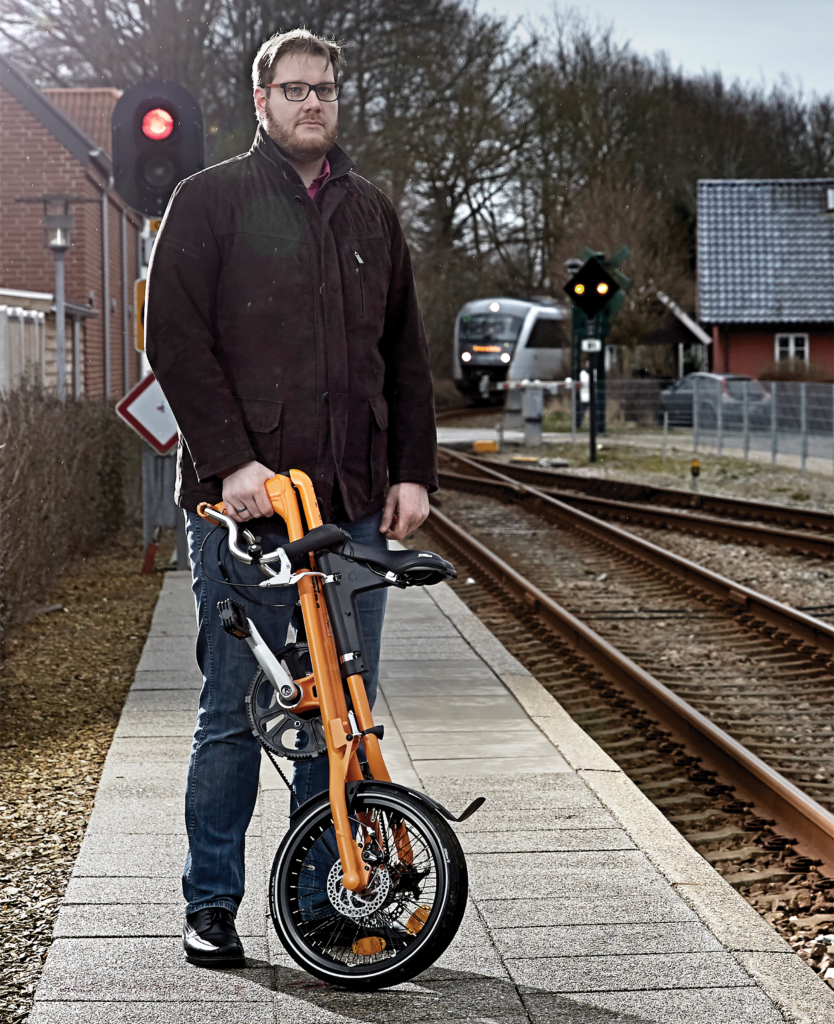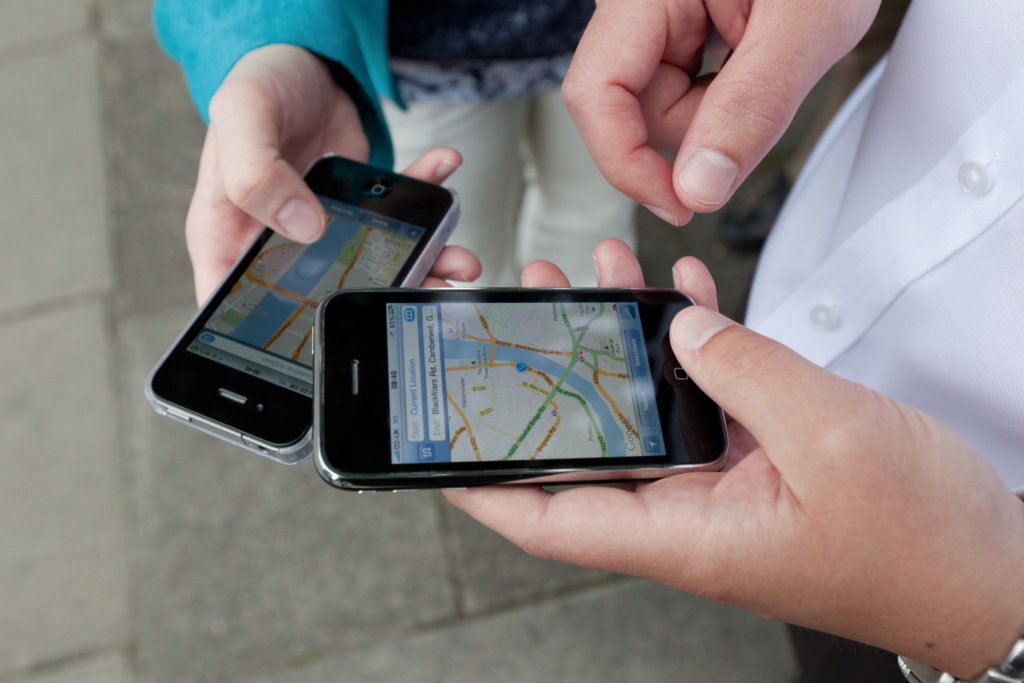Serving Mobility
Polis reports how cities don’t shy away from new technologies to achieve more sustainable mobility.
According to the Analysis of Walking Potential by Transport for London (2017), one million daily motorised journeys could be walked in London in less than ten minutes. Congestion is a burden to European cities, on the economy, on people’s health and on the environment. One way of reducing congestion is – surprisingly for some? – introducing walking and cycling measures.

The CIVITAS FLOW project, of which Polis is a partner, explores the impact that walking and cycling measures have on transport network performance and congestion. It has been found that when cities take such measures, congestion is reduced. Switching from car to walking and cycling is not always so simple, however, and other ways of reducing congestion must be explored for those who travel longer distances. New technologies can facilitate multimodal journeys, and allow people to combine public transport with other modes – a key aspect to truly challenge the number of private cars in a city.
Technology not only claims to make our everyday lives easier through saved time and convenience; it is also changing our lifestyles. Transport is not exempt from this change, as devices become increasingly connected and more data on commuting habits and journeys are made available. The concept of Mobility as a Service (MaaS) is gaining traction thanks to developments in the private sector linking transport and technology. A shining example of this is the proliferation of ride hailing apps that allow users to plan, book and pay for transport all by smartphone. This integration of functions has the potential to combine different travel types to make previously impractical journeys more feasible. In practice, this could involve integrating commercial transport services, such as taxis, car- and bike-sharing and car-hire, so that the mobility offer is personalised to a traveller’s needs. When transport is integrated in such a way, the convenience of such a model could reduce the need for car ownership.
Transport Technology & Mobility as a Service
Treating mobility as a service has a series of implications for the organisation of transport, and many challenges to implementation. Cities are at the core of transport organisation, so they have a vital role to play in any development of MaaS, even when it is primarily driven by the private sector. Such private sector-developed services should include the input of local and transport authorities to ensure that city and regional transport priorities and policies are supported by the changes. A key challenge is to develop commercial agreements between private firms and public transport operators, who may have previously operated all collective transport alone. This is particularly tricky in the field of data sharing, due to privacy concerns, but the sharing of data has already started to take place in some European cities.
There is no single universally-applicable model for MaaS and much will depend on the current level of transport integration in each given city. Some cities already have well-integrated public transport systems, with users able to access multiple modes of transport in their journeys while paying for only one subscription, whereas other cities already have a high level of private sector involvement in the provision of public transport. Polis member Transport for Greater Manchester is currently leading the MaaS work stream in the Future Cities Catapult, which is developing a brief for MaaS and aims to bring the various interested parties together to join up the work being done in the field. This work will explore the models of MaaS that could be implemented, and how they would work towards meeting cities’ goals for their desired transport, environment, health, social and economic outcomes.
In London: 1 million daily motorised journeys could be walked in less than ten minutes!
From MaaS to Multimodality
The opportunities that MaaS could bring are various. If access to mobility is made easier, customers may be more likely to use multimodal transport. For example, with an integrated transport package and the knowledge available on their smartphone, a transport user can know that there is a bike free in a nearby bike-share station, calculate the journey time to a train station and check the train schedule to work out the best time to leave and thus reduce waiting times. All of this can be paid for in one transaction via an app, making the process swifter and more practical.
The benefit is obviously that using a car will become obsolete and to encourage active modes of transport. Switching from a car to a bicycle and then a train, the transport user’s health is improved through more exercise. This also ties in with cities’ work to improve conditions for walking and cycling. The FLOW project breaks this down to transport planning and brings walking and cycling on an equal footing with motorised modes in transport modelling. FLOW partner cities have tested these improved modelling tools and assessed the impact of walking and cycling measures. FLOW also collected evidence how walking and cycling reduce congestion, as for example the transformation of Nørrebrogade Street in Copenhagen does, where bike lanes and pavements were widened, bus lanes were installed and speed limits were lowered. This resulted in a 45% drop in car traffic and the same reduction in traffic accidents. Introducing MaaS and implementing congestion-reducing measures such as these simultaneously can ease the transition from car to public transport, cycling and walking.


Local and regional authorities see potential that MaaS could improve mobility for more vulnerable or isolated people who are not able to travel due to disability, age, a lack of affordable options, or a lack of adequate transport provision for example in more remote areas. With the option of sharing a taxi by booking as a group and paying online, a tailored mobility offer can mean that the user can become more mobile, through the previously prohibitive costs being shared amongst a group. Having these options available could be a vital part of a transport authority’s efforts to serve all parts of the community.
If access to mobility is made easier, customers may be more likely to use multimodal transport.
What’s the Catch?
There are risks that could arise from the introduction of MaaS. Converse to the potential for reduced car use described above, there is a risk that MaaS could encourage higher use of individual modes of transport, such as car- and ride-sharing and taxis, and reduce the likelihood that people will choose to walk or cycle. This is due to the increased ease of use that could lead to people taking the most convenient mode of transport for them, even if it is less beneficial for their health, or increases congestion. Transport planners have trouble forecasting travel routes and mode choices because MaaS is so new. This should change when more pilots of MaaS systems are carried out. Cities need to avoid increased car use with MaaS and call for greater visibility of public transport and active travel via MaaS; this tandem has been lacking so far.
There has been interest in developing MaaS at European and national levels but this has not been replicated at city and regional levels yet. Polis compiled the perspective of its member cities and regions in a discussion paper on MaaS and found that it is important that city and regional authorities, who play a key role in regulating and providing transport services, contribute to this debate to find answers about the role they play: Should the transport authority be an enabler, a leader or let the MaaS market develop unimpeded?

Cities also need to be able to work out a practical model for commercial agreements between the public and private transport sectors, so that MaaS is introduced in a way that improves mobility for a wide range of citizens, as well as increasing transport efficiency. This would be complemented by introducing measures to make walking and cycling more practical. As with any technological innovation that will have a wide-ranging impact, planning and communication at an early stage can lead to benefits for many years to come: cities must explore MaaS strengths and opportunities while the growing MaaS community needs to better understand cities.